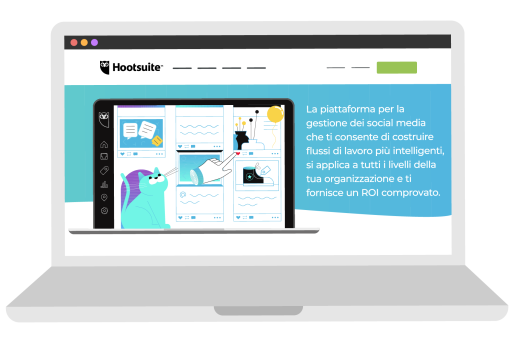With its 2008 debut, Hootsuite made social media management a mainstream software category. By its fifth birthday, the platform had attracted more than 8 million global users. But as the startup set its sights on doubling that figure over the next few years, its Web Operations team worried that inefficient translation processes would soon become serious obstacles.
The Challenge: Searching for Scalability
Manually exporting website content and importing completed translations was adding months to turnaround times — not to mention a significant strain on the team. Rigid workflows were complicating collaboration and creating inconsistencies between website, mobile app, and document translations.
And even when production did go according to plan, Hootsuite’s regional stakeholders were reporting that some of the work supplied by their translation vendor looked no better than machine translation at times. All the while, an inability to repurpose completed translations was drastically inflating expenses.
Hootsuite executives had no intentions of letting translation frustrations limit their ambitions. Localized content was still considered a pillar of global growth, and demand was only increasing across the organization. With no additional hiring on the horizon, though, Hootsuite knew a technology refresh had to be the foundation of any sustainable plan.
The Solution: Smartling
Smartling quickly distinguished itself from alternative solutions by offering a comprehensive suite of technical tools and language services.
An extensive API could directly connect Hootsuite’s source content to Smartling’s translation management platform, immediately eliminating manual import and export tasks. A dynamic translation memory database could significantly improve cost efficiency and linguistic consistency. And endlessly customizable workflows could easily be adapted to add new collaborators and address unique content requirements.
In addition to these welcome efficiencies, it was also clear that Smartling could play a proactive role in improving translation quality.
“As soon as we switched to Smartling’s technology and translators, our stakeholders noticed a dramatic difference. Adding visual context to our exported strings gives translators the full picture from the start, and our ability to communicate with the team in real time consistently helps us prevent problems before they happen,” said Colleen Fehr, Project Manager of Web Growth.
The restyled translation process Hootsuite has built since implementing Smartling now barely resembles its predecessor. The corporate website is automatically scanned each day to identify and submit new content for translation.
At the same time, any one of several dozen Hootsuite stakeholders can independently submit mobile app or document files for translation and track their completion status in a single, centralized space.
As the designated Smartling power user, all Fehr has to do is decide which content she’d like translators to tackle first and click “approve.” From there, translators can answer many of their own questions by leveraging visual context and referencing linguistic assets like Hootsuite’s brand glossary and style guide.
More complex inquiries can also be resolved in real time by reaching out to relevant stakeholders directly through the Smartling interface.
Once content is translated, proofreaders and regional reviewers give it one last look prior to publication. Hootsuite has now surpassed 15 million worldwide users and reduced its annual translation expense by 33% since becoming a Smartling customer.








